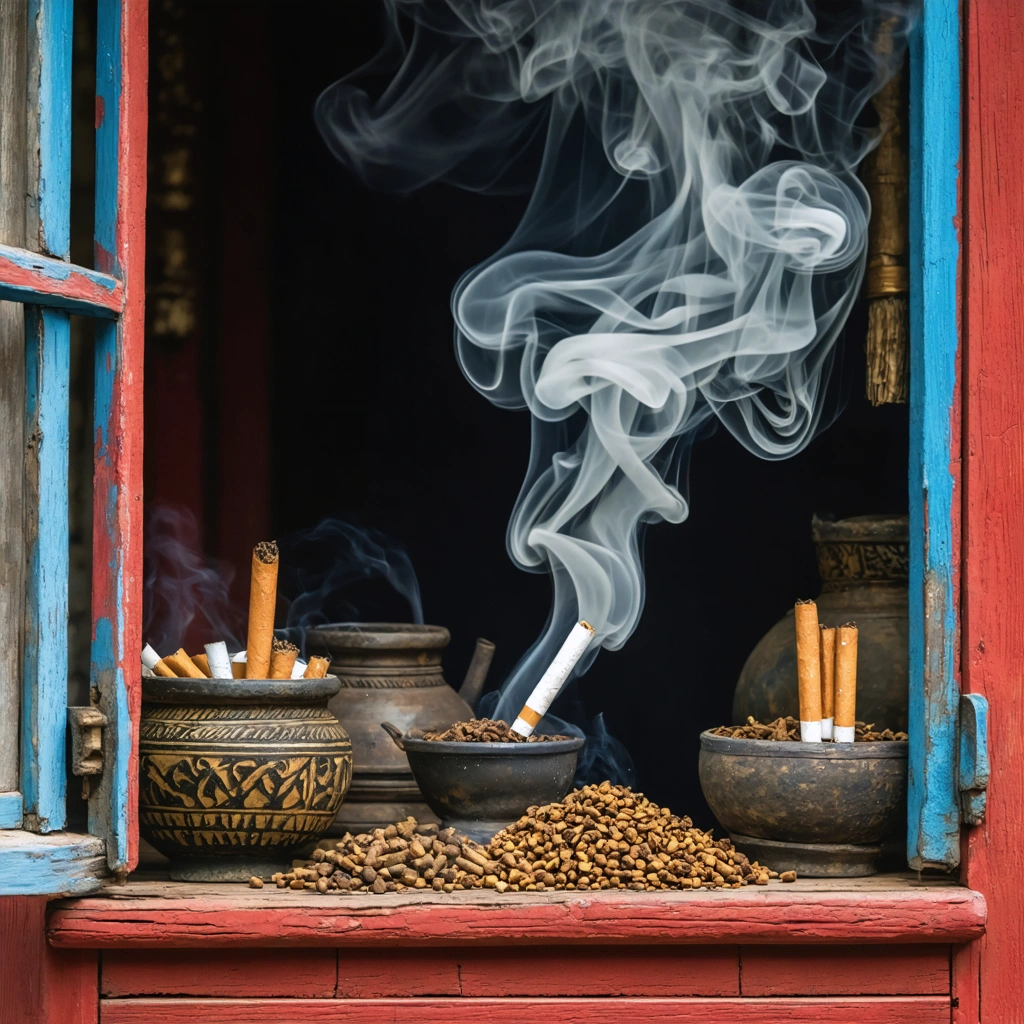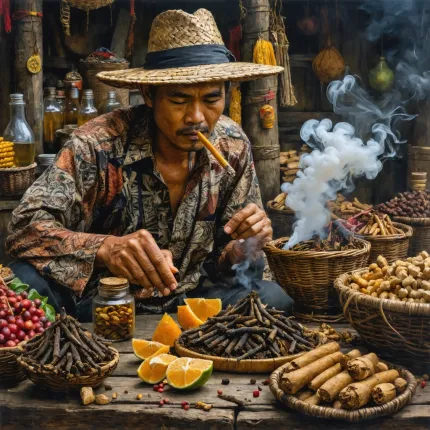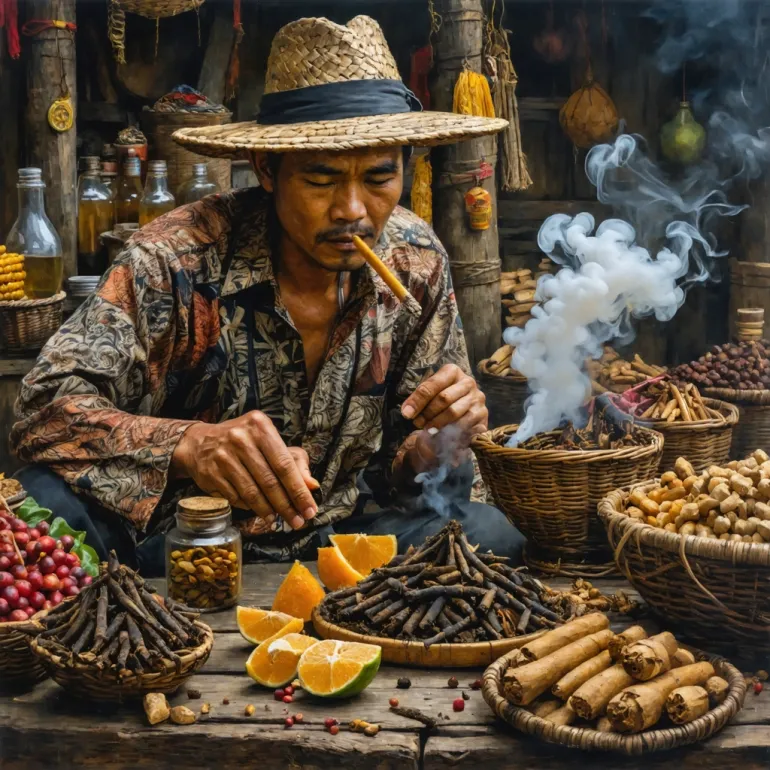Step into any bustling street corner or quiet village in Indonesia, and you’ll likely notice the unmistakable presence of rokok — the local cigarettes that go beyond mere smoking. They are a symbol, a ritual, and a thread woven deeply into the fabric of Indonesia’s cultural identity. But what lies beneath this seemingly simple act of lighting up? The story of rokok is a reflection of Indonesia’s rich and complex tobacco culture, one that spans centuries and carries layers of social, economic, and even political significance.
The Intricacies Behind the Smoke
At first glance, rokok might appear just like any other cigarette. However, the diversity of rokok varieties and their cultural significance paint a far more nuanced picture. From the iconic kretek — clove-flavored cigarettes unique to Indonesia — to hand-rolled versions that local farmers craft with pride, rokok embodies a living tradition. The images or gambar rokok often seen on packaging don’t just serve as branding; they tell stories of heritage, local pride, and sometimes, social commentary.
But here’s where it gets complicated. Despite its cultural importance, the widespread use of rokok also introduces a web of health concerns and societal debates. Indonesia remains one of the world’s largest consumers of tobacco, and the public health impact is undeniable. How does a nation reconcile its cherished tobacco culture with the pressing realities of health and modernization? That tension is at the heart of Indonesia’s ongoing tobacco narrative.
Why Rokok Matters Beyond Just Smoking
Consider this: tobacco cultivation and cigarette production provide livelihoods for millions in Indonesia. The intricate craftsmanship behind rokok, especially kretek, supports entire communities, from clove farmers to factory workers. The tobacco culture here isn’t merely about consumption; it’s about identity, economy, and tradition intertwined.
Yet, the visible allure of rokok and the cultural imagery it carries can sometimes overshadow the challenges it poses. Public health advocates warn of rising smoking rates among youth, aggressive marketing, and the burden of tobacco-related illnesses on Indonesia’s healthcare system. Images of rokok packaging — the gambar rokok — have become battlegrounds for regulation, censorship, and public awareness campaigns.
So what can be done? Is there a way to preserve Indonesia’s tobacco heritage while safeguarding public health? This article will explore the multifaceted world of rokok, unpacking its historical roots, current cultural significance, and the evolving landscape shaped by policy and public opinion.
What to Expect in This Exploration
- An overview of the origins and evolution of rokok within Indonesia's tobacco culture
- Insights into the cultural symbolism behind rokok imagery and packaging
- Discussion on the social and economic roles of tobacco in Indonesian society
- Examination of health implications and the challenges posed by smoking
- Perspectives on how Indonesia is balancing tradition with modern health demands
By the end, readers will gain a clearer understanding of why rokok is far more than just a cigarette in Indonesia — it is a mirror reflecting the nation’s complex relationship with tobacco, tradition, and transformation. Whether you’re a curious traveler, a health professional, or someone intrigued by cultural studies, this journey into Indonesia’s smoking culture promises to enlighten and provoke thoughtful reflection.

Rokok: Indonesia’s Smoking Culture and Tobacco Traditions
What is Rokok and Why is it Central to Indonesian Tobacco Culture?
Rokok, the Indonesian word for cigarette, holds a unique place within Indonesia’s tobacco culture. Unlike the typical Western cigarette, the traditional Indonesian rokok often refers to kretek, a clove-infused cigarette that combines tobacco with aromatic cloves. This fusion creates a distinct flavor and aroma that is deeply embedded in Indonesian society.
The cultural significance of rokok in Indonesia goes beyond mere consumption. It reflects a rich history of tobacco cultivation, craftsmanship, and social rituals that have developed over centuries. The tobacco culture in Indonesia is characterized by widespread use, especially among adults, where smoking is often intertwined with social events, ceremonies, and everyday life.
How Does Rokok Reflect Indonesia’s Complex Tobacco Traditions?
Indonesia’s tobacco traditions are complex due to the variety of tobacco types, regional preferences, and the historical evolution of rokok. The kretek cigarette, invented in the early 20th century, revolutionized smoking in Indonesia by combining local spices with tobacco, creating a product that became both a national symbol and an economic staple.
This cultural complexity is visible in:
- Regional Variations: Different parts of Indonesia have developed unique blends of tobacco and cloves, influencing the taste and strength of rokok.
- Economic Importance: Indonesia is one of the world’s largest producers and consumers of tobacco products, with the rokok industry contributing significantly to employment and government revenue through taxes.
- Social and Ritualistic Roles: Rokok is often present in traditional ceremonies, social gatherings, and as a customary gesture of hospitality.
What Are the Visual Representations and Symbolism of Rokok in Indonesia? (Gambar Rokok)
Visual imagery or gambar rokok plays a crucial role in representing Indonesia’s tobacco culture. From packaging designs to advertising, gambar rokok often incorporates traditional motifs, local symbols, and cultural references that resonate with Indonesian identity.
For example, many kretek brands use imagery inspired by Indonesian landscapes, cultural icons, and indigenous art forms. These graphics not only serve marketing purposes but also reinforce the cultural heritage associated with rokok consumption.
Moreover, gambar rokok can sometimes reflect social commentary or government warnings related to health, making the visual aspect a dynamic part of the tobacco culture narrative in Indonesia.
What Are the Health and Social Implications of Rokok in Indonesia?
While rokok is culturally significant, it also poses serious health challenges. Indonesia has one of the highest smoking rates globally, with over 60% of adult males reported as smokers according to the World Health Organization. The prevalence of rokok smoking has led to increased incidences of tobacco-related diseases such as lung cancer, heart disease, and respiratory illnesses.
Socially, smoking is deeply normalized, which complicates tobacco control efforts. However, the government and health organizations have initiated campaigns to educate the public about the risks and to regulate advertising, packaging, and sales, especially targeting youth consumption.
How Is the Future of Tobacco Culture and Rokok Shaping in Indonesia?
The future of rokok and Indonesia’s tobacco culture is at a crossroads. On one hand, traditional practices and strong cultural ties continue to support widespread use. On the other hand, rising health awareness, government regulations, and global anti-smoking trends are pushing for change.
Innovations in tobacco alternatives, such as e-cigarettes and heated tobacco products, are also emerging in the Indonesian market. These products challenge the traditional rokok dominance and reflect shifting consumer preferences.
Efforts to balance cultural preservation with public health goals require nuanced policies and community engagement. Preserving the heritage of rokok while reducing health risks is a complex but necessary endeavor.
Summary of Key Points About Rokok and Indonesian Tobacco Culture
- Rokok, especially kretek, is a unique Indonesian cigarette blending tobacco and cloves.
- Indonesia’s tobacco culture is deeply intertwined with social practices, regional traditions, and economic factors.
- Gambar rokok (cigarette imagery) reflects cultural identity and marketing strategies.
- High smoking rates present significant public health challenges.
- The future of rokok involves balancing cultural heritage with health-conscious policies and emerging tobacco alternatives.
Understanding rokok within Indonesia’s tobacco culture requires appreciating its historical roots, societal role, economic impact, and ongoing health debates. This complex interplay makes rokok a fascinating subject for anyone interested in cultural traditions and public health in Southeast Asia.



